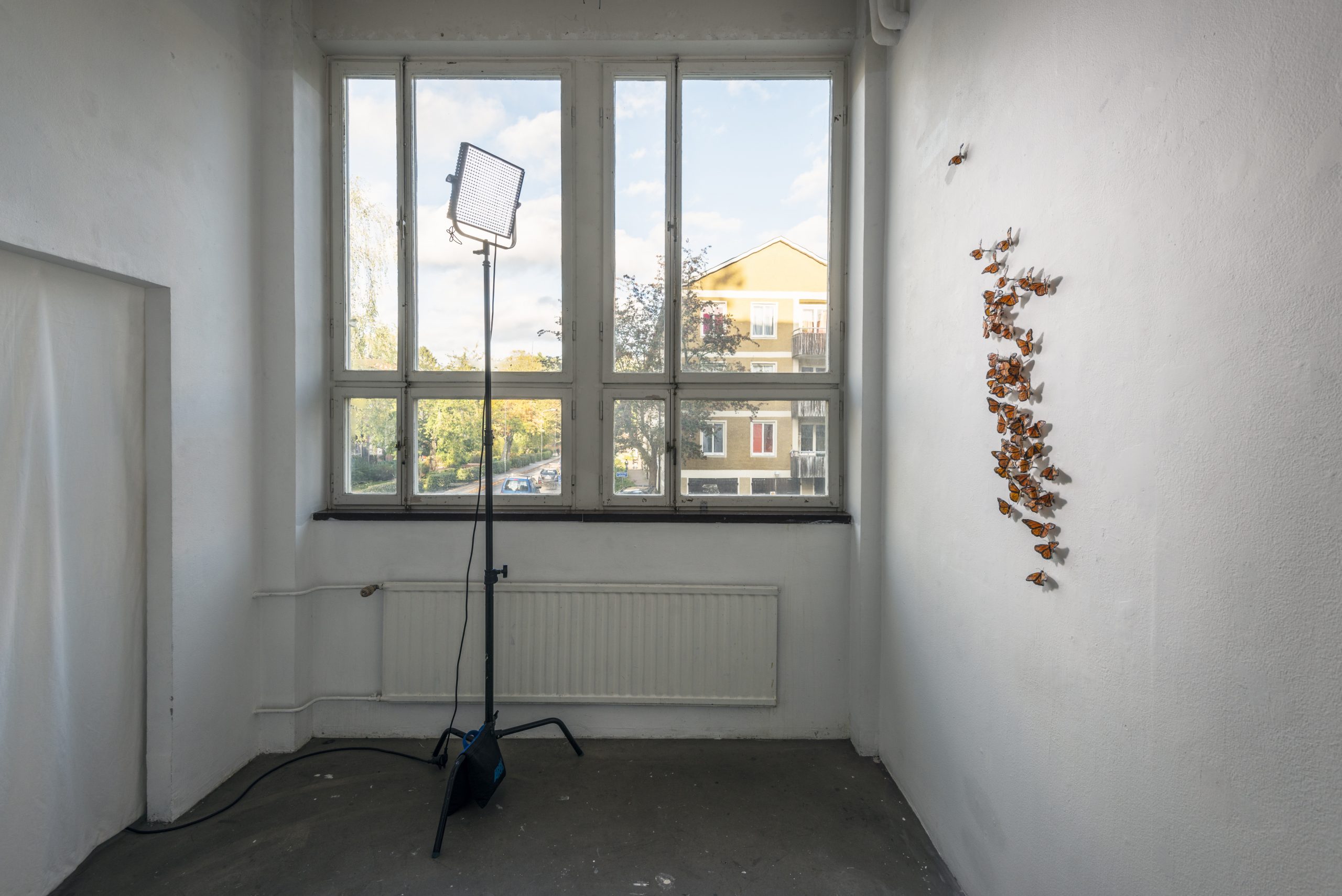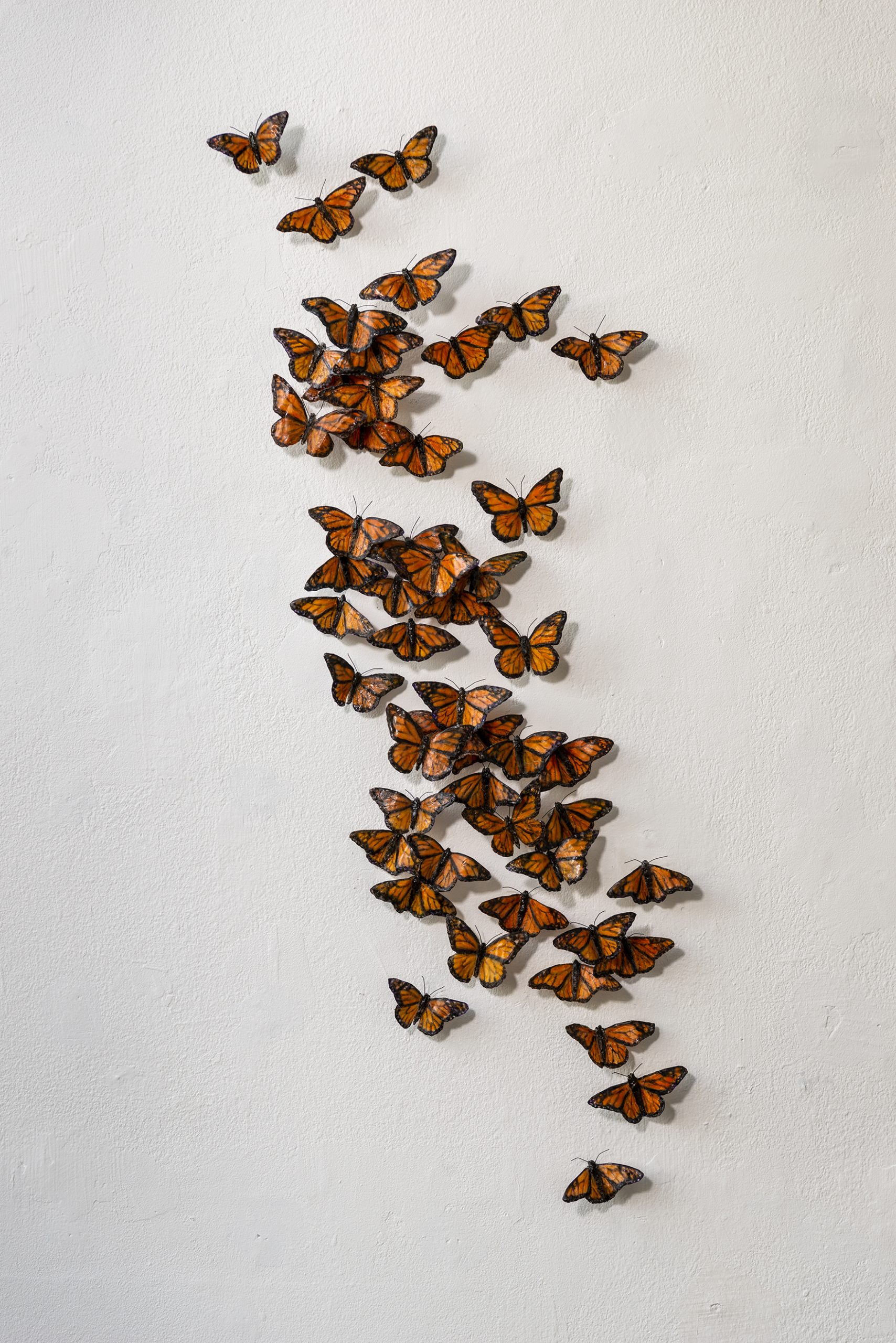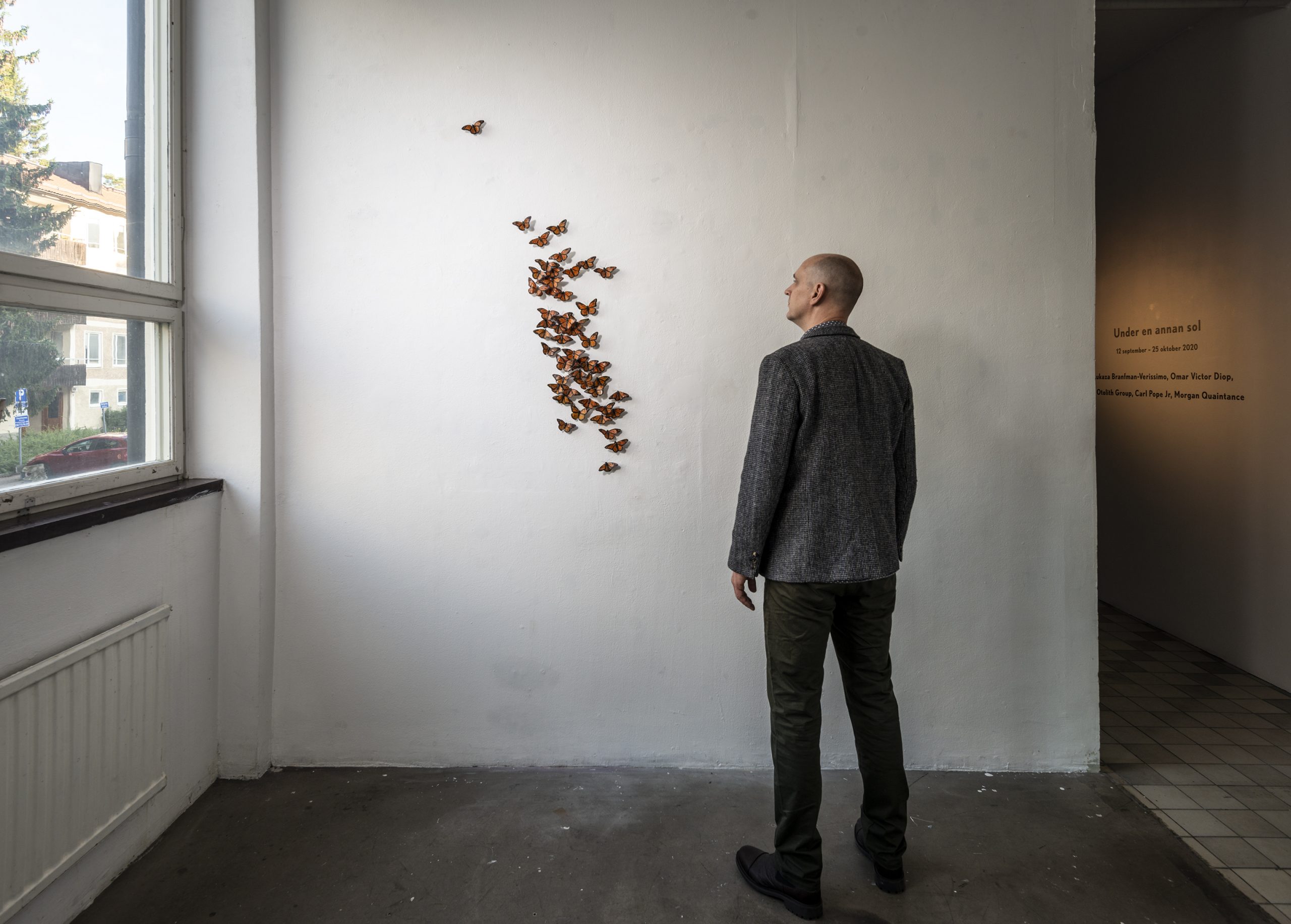Can the absence of a butterfly’s wing strokes make an entire world stand still?
Texten finns på svenska här: The Visitors 2020
The piece I showed at Centrifug, Konsthall C, was an installation featuring fifty sculptures inspired by the Monarch butterfly, an endangered species, shown together with a lite panel lamp and three test tubes filled with watercolors.
During their annual migration, the Monarch head to California and to Central Mexico where they can be seen gathering in a huge number on the same tree.

In an experiment, a scientist modified the pattern of the wings on a group of Nymphalidae by either adding or painting over the dots. This had unforeseen consequences for the male’s ability to survive and attract a female.
During the artistic process, many decisions are made. Can aesthetic purposes be reconciled with scientific research processes? The white dots on the Monarch’s wings that are characteristics of this species, were removed as they did not fit into my artistic interpretation. On an aesthetic level, my artistic working process began to resemble science’s manipulation of the living.
The term Butterfly effect was minted by the mathematician and meteorologist Edward Lorenz.
The Butterfly effect is based on the theory that a marginal impact in a part of a system can result in large and unpredictable effects elsewhere in the system.
 Installation views; 50 sculptures made of paper, watercolor, wax, pigment, and a lite panel lamp. The sculptures are in scale 1:1
Installation views; 50 sculptures made of paper, watercolor, wax, pigment, and a lite panel lamp. The sculptures are in scale 1:1


Lab tubes filled with water color and water hang on the opposite wall.